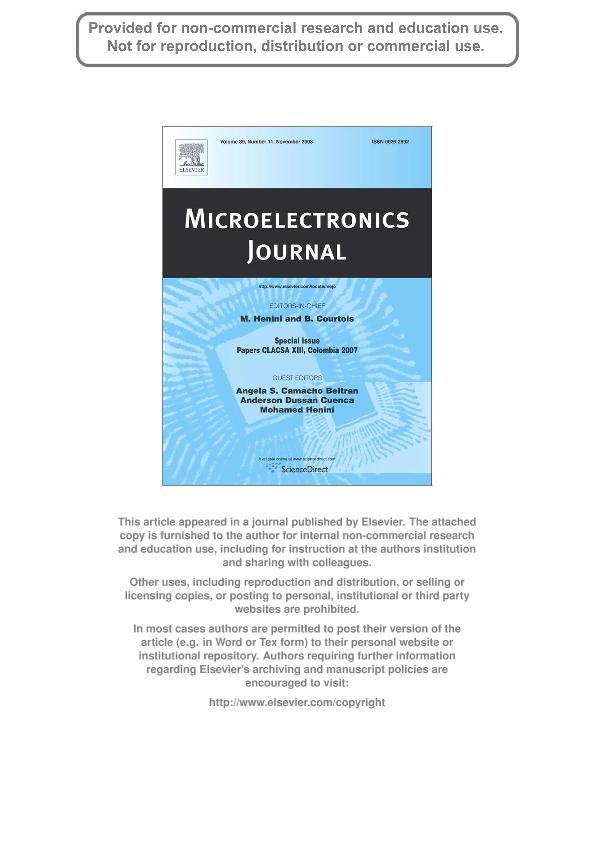Artículo
Microcrystalline silicon thin films: A review of physical properties
Fecha de publicación:
11/2008
Editorial:
Elsevier
Revista:
Microelectronics Journal
ISSN:
0026-2692
Idioma:
Inglés
Tipo de recurso:
Artículo publicado
Clasificación temática:
Resumen
In this work we present a study of the optical, electrical, electronic and structural properties of Boron doped hydrogenated microcrystalline silicon thin films (mc-Si:H). The films were deposited in an RF plasma reactor using as reactive gas a mixture of silane and diborane, both highly diluted in hydrogen. The Boron concentration in the reactive gas was modified from 0 to 100 ppm. The addition of Boron to the silicon films not only moves the Fermi energy level to the center of the gap, but also induces changes in all the physical properties. The Boron effect on structural and morphological properties was studied by X-ray diffraction and atomic force microscopy (AFM); the rugosity and grain size increased with the Boron concentration. The absorption coefficient measured by the constant photocurrent method (CPM) at low photon energies also showed an increase, which can be explained and correlated with an increase in the density of state (DOS) in the gap, due to Boron’s bonding. At high temperatures (T>300K) the controlling transport mechanism is thermally activated; the curves conductivity log versus the inverse of temperature gives straight lines. The activation energy, measured from the valence band, decreases with Boron concentration, as expected, passing through a maximum, corresponding this point to the position of Fermi energy of an intrinsic film. At low temperatures (T<300K) the predominant transport mechanism was variable range hopping (VRH). The behavior of the charge hopping under different electrical fields was followed. Results showed that conductivity remained constant in a VRH regime only for a narrow range of electrical field.
Palabras clave:
Microcrystalline Silicon
,
Optoelectronic Properties
,
Density of States
Archivos asociados
Licencia
Identificadores
Colecciones
Articulos(INTEC)
Articulos de INST.DE DES.TECNOL.PARA LA IND.QUIMICA (I)
Articulos de INST.DE DES.TECNOL.PARA LA IND.QUIMICA (I)
Citación
Dussan, A.; Buitrago, Roman Horacio; Koropecki, Roberto Roman; Microcrystalline silicon thin films: A review of physical properties; Elsevier; Microelectronics Journal; 39; 11; 11-2008; 1292-1295
Compartir
Altmétricas




